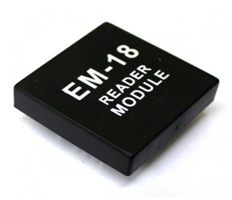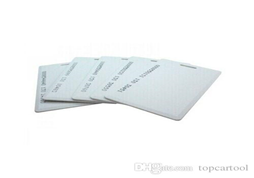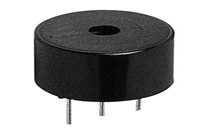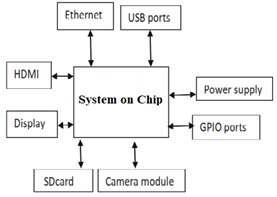
Title: IoT based Child Safety Management using Raspberry Pi and RFID Technology.
Authors: Dr.B.Prabhakar
Organisation: JNTU Hyderabad College of Engineering, Jagtial, Telangana.
ABSTRACT
The Children safety and security is more and most important one to build a best and powerful nation. Hence the children security policies must strengthen to save the children from any problems. In that perspective, many technologies are deployed, and devices are made to ensure the safety zone of the children. To improve the security services here, in this paper a system for children’s safety is proposed for children safety purpose. We develop an IoT based child safety using raspberry. Students having a RFID based cards which used for authentication. Whenever student enters in school bus .Raspberry sends a message notification to parents, principal.
Keywords: Raspberry Pi, IoT, RFID, LCD and Buzzer.
1. INTRODUCTION
Children’s security has always been a priority problem whose solution must constantly be improved. The Smart Cities paradigm clearly takes into account the need of providing a more favourable environment for children’s living and learning, but focusing on this aspect it has also to deal with challenges due to cities complex environments, e.g. many construction sites, a large number of running vehicles, crowded meeting places and complex personnel structures. Such an environment indeed is generally lacking safety conditions for children, which are inherently curious, active, and unaware (or incautious) of surrounding dangers. According to the incomplete statistics of news reports, the school-age children security accidents in recent years can be classified into four types: 34.7% of accidents happening outside the schools, 11.7% of children’s misconnections, 29.8% of school bus drivers carelessness and 23.8% of children’s losses.
Safety oriented projects are addressed to use ICT services to build secure ways of reducing accidents probability. For parents the safety of their children is vital, and a low-cost technology may give a big contribution to improve it. L’Aquila municipality is moving in that direction, exploiting University innovative researches, trying to offer a more efficient service aimed to solve children’s security issues. One line of experimentation is related to the monitoring of child’s movements through a system involving RFID (Radio Frequency IDentification) technologies. The solution is exploited for school buses localization, while the second to gather information’s This paper is especially focused on children’s movements from home to school entrance, trying to solve a little part of the school-age children’s security problem. A possible categorisation of security system for children. During the past few years, in the area of wireless communications and networking, a novel paradigm named the Internet of Things (IOT) which was first introduced by Kevin Ashton in the year 1998, has gained increasing attention both in the academia and industry. In recent times, researchers have used the term ”Internet of Things” to refer to the general idea of things, especially everyday objects that are readable, recognizable, addressable, and/or controllable via the Internet, whether via RFID, wireless LAN (Local Area Network), WAN (Wide Area Network), or other means. Combining different developments will build an ”Internet of Things” that enables interaction of intelligent systems with the real world. Based on IOT, RFID, and cloud computing technologies, our project is designed to guarantee the children security protection, focusing on the security on the school route category. We built a system that uses such types of information to alert parents when their child is moving by school bus. The system generates alert, managed by a backend system, when the child enters and exits the school bus. The same mechanism is followed when the child leaves the school, taking the school bus and approaching home.
With this information the system can inform parents about their child’s movements and definitely his security. In this paper we only present the children tracking process while they are in the school bus, indeed the children’s movements prior to entering and after exiting the school bus is not covered. Nevertheless, the same monitoring solution can be exploited for children’s entering and exiting the school, allowing for a better safety check. It is worth noting that the chosen technology is also dependent on the idea of maintaining as low as possible the overall costs in order to make the solution affordable for municipalities and parents.
PROPOSED METHODOLOGY
The Children safety and security is more and most important one to build a best and powerful nation. Hence the children security policies have to strengthen to save the children from any problems. In that perspective, many technologies are deployed, and devices are made to ensure the safety zone of the children. To improve the security services here, we proposed the ideas to get accurate results about child safety. It came with only manual approaches for providing information to the parents through phone calls or postal service. But it may not be sufficient one to satisfy the expectations of people who involved children security.
A. Traditional Child Safety and Security System
The problems in traditional approaches are listed below.
Manual operations.
Delayed Message Service.
No Tracking facility.
No Direct Communication with Children.
To overcome all such problems the recent innovations and technologies are recommended to improve the safety measure on children security. The Smart watches for kids can provide maximum services what parents need to know from their children place. But it can give only main areas which found in the GPS system. Hence, few more features to be improved with the smart watch to provide updated information about the children visited the different places in the school campus. The smart watch should sense system should connect with child school ID card for sensing and tracking the children movements inside the school campus using RFID tags. This can be achieved when RFID tag connecting module integrates with children smart watches. Then the smart watch can observe the movement of the child whenever the RFID scanning device communicates with the kids‘ smart watches. The dedicated module in smart watch will process the signal, and it sends the details to parents with associated attribute fields. The above attributes are collected through Smart watch and those will be sent to the parent‘s smart phone. In the parent‘s smart phone the respective mobile app will process the incoming data and generates the result according to the users‘ expectation.
Figure 1. Proposed block diagram of child safety management.
B. Working
The working of this models starts when student unique ID which I sin RFID form scans in school bus unit and sends a notification to parents and then when he enters to school the same RFID is scanned by the school reader unit which identifies the student entry and exit of the student. This process repeats for 2 times in a day when student enters and leaves the school. Whenever the student ID is missing from the data base the device sends alert message to parents the same is displayed on the LCD and buzzer for local reference.
HARDWARE DESCRIPTION
RFID Module
RFID means Radio frequency identification. The RFID system involves a tag and reader. RFID tag may also call an RFID chip. When card scanned ,the antenna within the tag picks up the radio wave and sends a response back to the reader. In this paper, we use RFID for unique identification.
Figure 2. RFID Reader.
Figure 3. RFID Cards.
LCD
LCD is liquid crystal display technology works by blocking light. Specifically, it is made of two pieces of polarized glass that contain a liquid crystal material between them. A backlight creates light that passes through the first substrate. It is used for display purpose.
Figure 4. LCD display
Buzzer
A buzzer or beeper audio signalling device, which may be mechanical, electromechanical, or piezoelectric. Typical uses of buzzers and beepers include alarm devices, timers, and beepers include alarm devices, timers, and confirmation of user input such as a mouse click or keystroke.
Figure 5. Buzzer
Raspberry Pi
It is an ultra-cheap minicomputer with 5.5 cm width and 9 cm length. It consists of a component named System on Chip (SoC) which comprises of single core CPU with a supportive processor for computing floating points, GPU and RAM with 512 MB size (SD-RAM). Moreover, it consumes less power, which is just around 5-7 watts. The architecture of raspberry pi is given in figure 6. It has couple of cache memory levels, where first level is of 32KB size and the latter is of 128KB size. These are utilized to store recent programs and ALU is utilized to execute instructions.
Figure 6. System architecture of raspberry pi
Table 1. Specifications of Raspberry pi

It is a very small device and can incorporate other devices also. It consists of both the hardware and software. It requires an SD card and a power supply to related mouse and keyboard. Additionally, a display also exists for functioning OS such as Windows and Linux.
Figure 7. Raspberry pi
RESULTS AND DISCUSSION
Python is an interpreted, object oriented, high level programming language with dynamic semantics. Python’s simple. easy to learn syntax emphasizes readability and therefore reduces the cost of program maintenance. Python supports module and packages, which encourages program modularity and code reuse.
CONCLUSION
Hence the children security policies must strengthen to save the children from any problems. In that perspective, many technologies are deployed, and devices are made to ensure the safety zone of the children. To improve the security services here, In this paper a system for children’s safety is developed For children safety purpose. we developed a IOT based child safety using raspberry. Students having a RFID based cards which used for authentication. Whenever student enters in school bus .Raspberry sends a message notification to parents, principal.
REFERENCES
[1] D. K. Kamat, S. P. Ganorkar and R. A. Jain, “Child activity monitoring using sensors”, International Journal of Engineering and Techniques vol. 1, no. 3, pp. 129-133, 2015.
[2] 8 of The Best Smartwatches for Kids, http://smartwatches.org/learn/the-top-smartwatches-for-kids, [Accessed: June 28, 2017]
[3] J. Saranya and J. S. Kumar, “Implementation of children tracking system on android mobile terminals”, International Conference on Communications and Signal Processing, IEEE, 2013.
[4] Y. Mori, et al. “A self-configurable new generation child tracking system based on mobile ad hoc networks consisting of Android mobile terminals”, 10th International Symposium on Autonomous Decentralized Systems, IEEE, Tokyo and Hiroshima, Japan, 2011.
[5] O. D. Lara and A. L. Miguel, “A survey on human activity recognition using wearable sensors”, IEEE Communications Surveys and Tutorials, vol. 15, no. 3, pp. 1192-1209, 2013.
[6] S. C. Mukhopadhyay, “Wearable sensors for human activity monitoring: A review”, IEEE Sensors Journal, vol. 15, no. 3, pp. 1321-1330, 215.
[7] D. M. Wood, et al., “A report on the surveillance society”, Surveillance Studies Network, UK, 2006.
[8] L. A. Stilp, “RFID based security system”, U.S. Patent No. 6,888,459. 3 May 2005.
[9] E. Taylor, “Surveillance schools: Security, discipline and control in contemporary education”, Springer, 2013.
[10] J. Wolak, F. David and M. Kimberly, “Internet initiated sex crimes against minors: Implications for prevention based on findings from a national study”, Journal of Adolescent Health, vol. 35, no. 5, pp. 424-e11, 2004.
To download the above Complete paper in PDF format Click on below Link:







